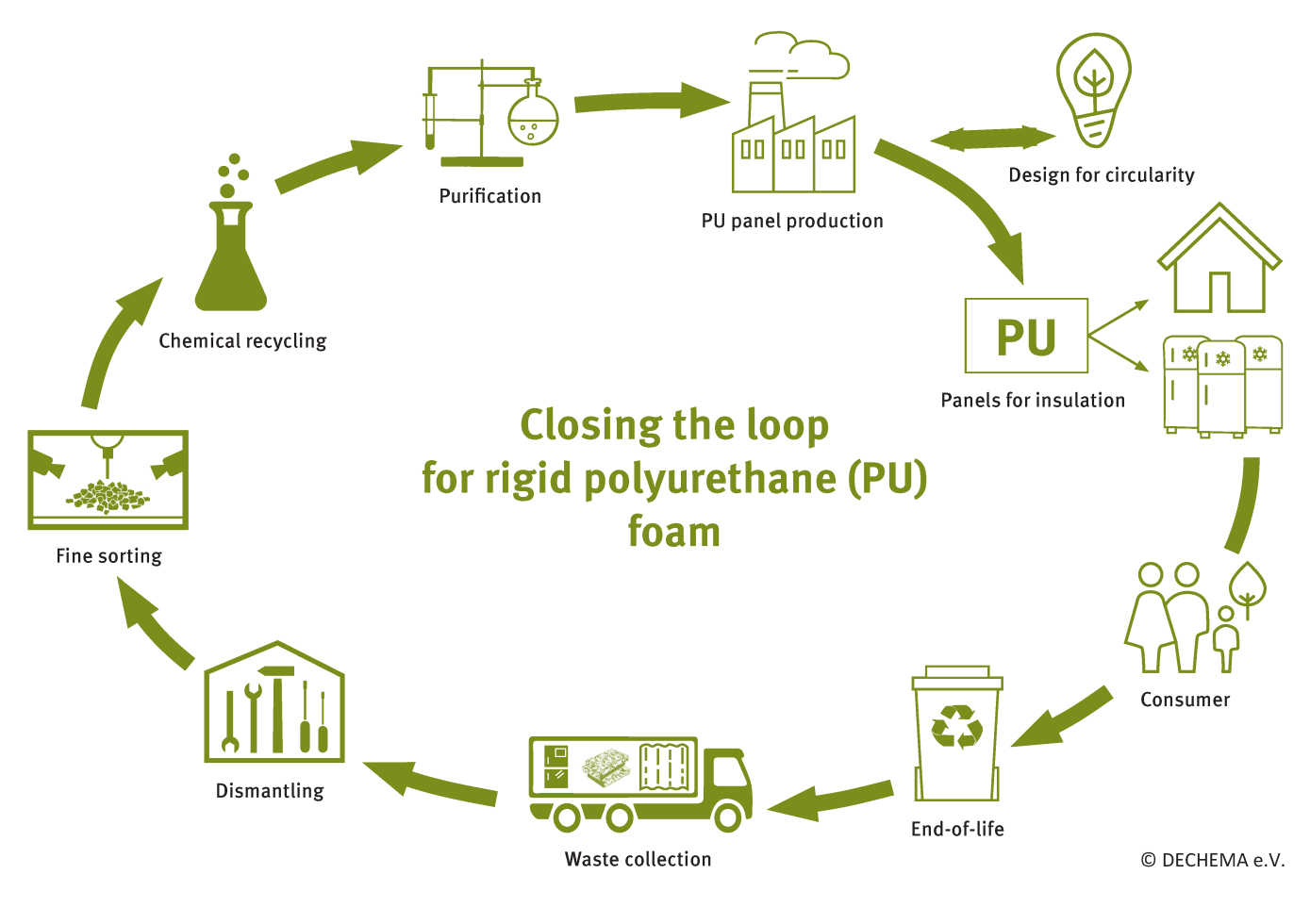As industries strive toward circular economy targets, the chemical recycling of complex plastic waste streams, such as polyurethane (PUR) rigid foam, is becoming increasingly important. However, despite advances in chemical recycling technologies, large-scale implementation remains limited due to economic, logistical, and regulatory challenges.
In their recent study, Özkan, Lucia, and Engell (2025) address these barriers by developing an optimization-based framework for strategic supply chain planning in the context of PUR waste recycling in Germany. This study is part of the European Circular Foam project.
Bridging Technology and System Design
The study introduces a multi-product, multi-echelon, multi-period mixed-integer linear programming (MILP) model for designing reverse supply chains that support chemical recycling. This model enables decision-makers to understand the economic feasibility of various waste treatment options, taking into account spatial, temporal, and market-related complexities. The primary objective is to maximize gross profit across a network that handles waste collection, transport, processing, and product valorization under various market and policy conditions.
Comparing Catalytic Pyrolysis and Incineration
The model is tested in a real-world case study focusing on the German PUR foam waste stream. Two end-of-life pathways are compared: catalytic pyrolysis, a promising chemical recycling technology, and incineration, the conventional disposal route.
Key findings include:
- Catalytic pyrolysis is not yet cost-competitive under current market conditions, primarily due to high processing costs and uncertain product prices.
- Nevertheless, pyrolysis offers superior long-term potential, generating significantly higher revenues and reducing environmental impact compared to incineration.
- The addition of polyisocyanurate (PIR) waste as an alternative or complementary feedstock improves both system flexibility and economic viability.
- A 10% increase in product prices is sufficient to render catalytic pyrolysis economically feasible, highlighting its proximity to break-even under modest market shifts.
- Even in sensitivity analyses where incineration becomes cheaper (e.g., reduced gate fees), pyrolysis remains the more favorable option when evaluated holistically.
Strategic Insights for Circular Economy Stakeholders
This research provides several valuable insights for industry and policymakers aiming to build circular value chains for plastic waste:
-
Infrastructure investments should consider future market dynamics, as relatively small changes in product value or policy incentives could shift the balance toward advanced recycling technologies, such as pyrolysis.
-
Diversification of feedstock sources, including similar plastic waste streams such as PIR, increases system resilience and improves resource utilization.
-
Spatial network design, including the location and capacity of recycling facilities, is a critical factor in the overall profitability and sustainability of recycling systems.
-
The model provides a decision-support tool for evaluating various ‘what-if’ scenarios, enabling data-driven planning under uncertainty.
Implications for Policy and Practice
The proposed optimization framework supports the transition from linear to circular systems by aligning economic feasibility with environmental goals. In particular, it demonstrates that the economic gap for chemical recycling is narrowing, and targeted interventions—such as price incentives, recycling quotas, or R&D subsidies—could accelerate the uptake of sustainable technologies.
Moreover, this type of strategic modeling facilitates long-term planning and investment decisions, which are essential for building robust reverse logistics networks. The research also highlights the need for policy frameworks that extend beyond recycling quotas, encompassing infrastructure development, market support for recycled products, and coordination across value chain actors.
 Conclusion
Conclusion
Özkan, Lucia, and Engell (2025) provide a valuable contribution to the field of circular supply chain design with a scalable, adaptable modeling framework. Their work highlights the critical role of integrated planning and system optimization in making chemical recycling economically viable. As Europe and other regions move toward more ambitious waste reduction targets, such evidence-based tools will become indispensable for designing the infrastructure and logistics systems that underpin a truly circular economy.
This project has received funding from the European Union’s Horizon 2020 research and innovation programme under grant agreement No. 101036854
Reference:
Özkan, D. M., Lucia, S., & Engell, S. (2025). Strategic network design for the chemical recycling of polyurethane rigid foam waste in Germany. Computers & Chemical Engineering, 202, 109273. https://doi.org/10.1016/j.compchemeng.2025.109273
Also read: Towards Circular Transformation in High-Performance Plastics Waste Management
Also read: Research challenges in circular urban supply chains





